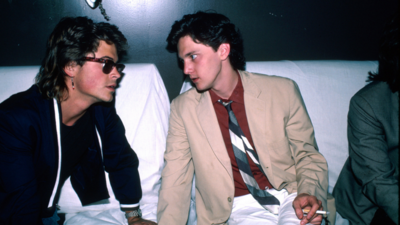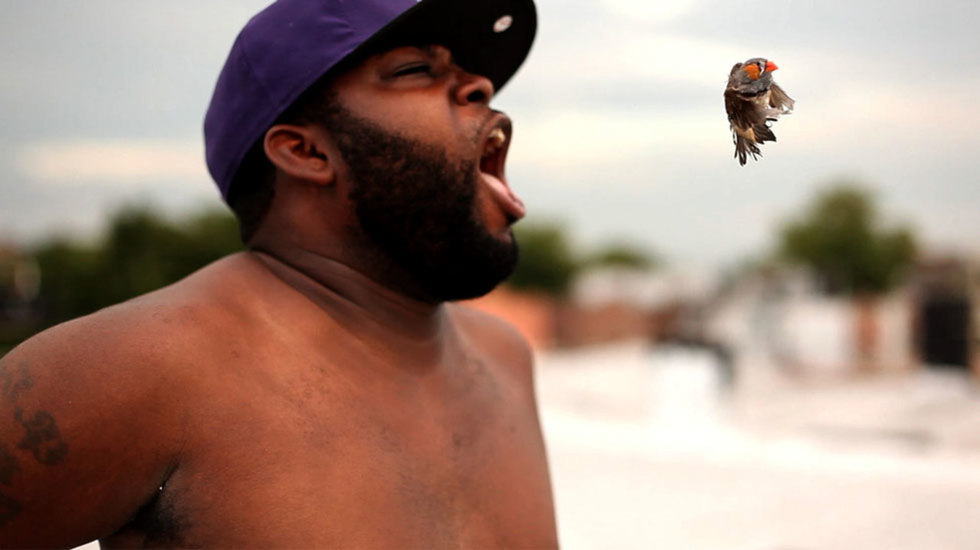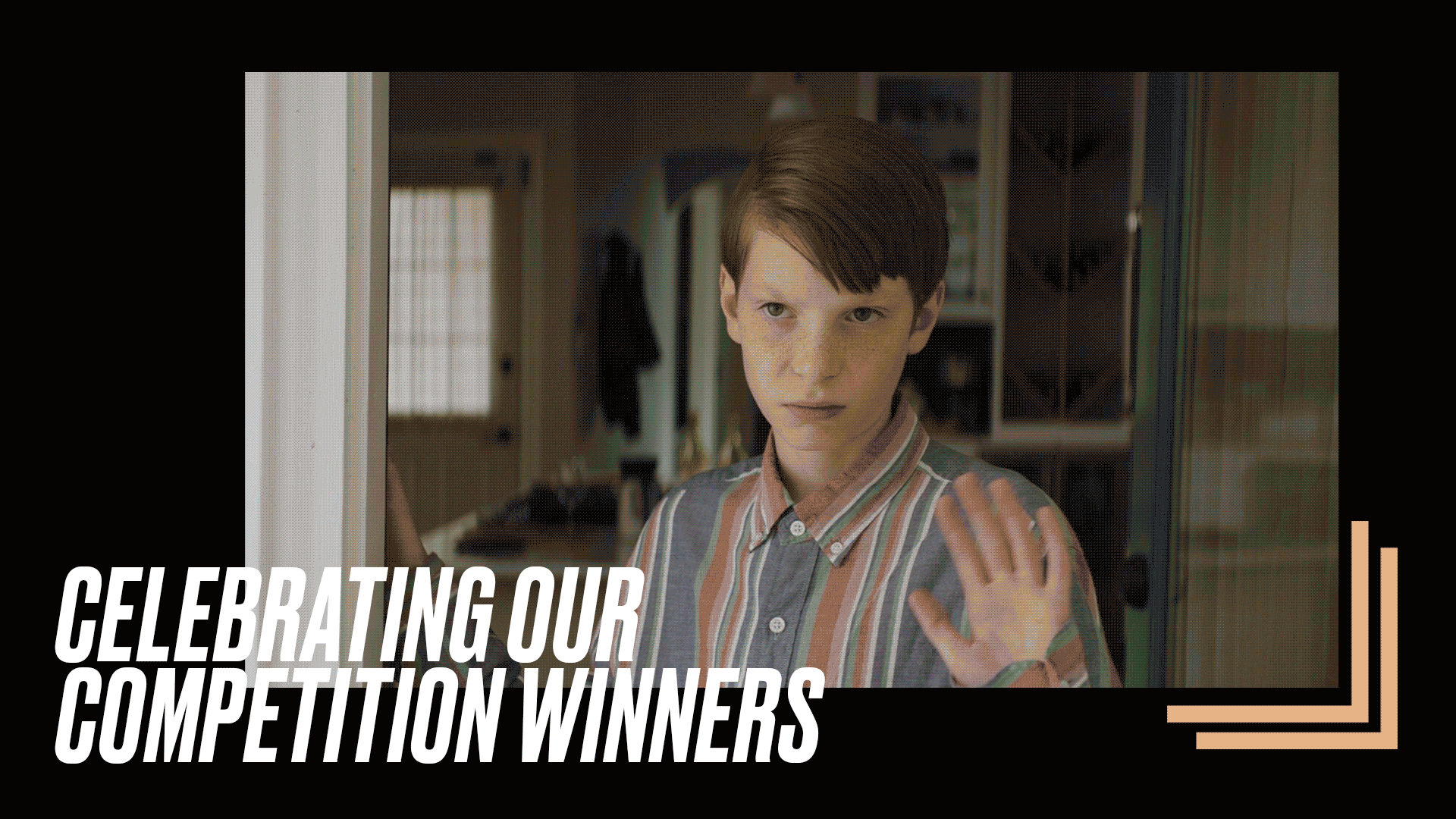
BY KAREN KEMMERLE |
‘Flex is Kings’ Co-Director Michael Beach Nichols on East New York and DIY Dance
Get educated in the art of Flex at TFF 2013 by experiencing the pulsating documentary, ‘Flex is Kings.’ Co-Director Michael Beach Nichols spills on gravity-defying stunts and Battlefest, one of Brooklyn’s most beloved community events.

Tribeca: Tell us a little about Flex is Kings. What inspired you to tell this story?
Michael Beach Nichols: Flex Is Kings tells a story of a year immersed in the DIY dance/art scene of East New York flex. Our protagonists jump off balconies, spit birds from mouths, play Pinocchio in avant-garde dance companies, travel to Scotland, and build time machines.
The flex scene promised to be unpredictable and full of heart. Who wouldn’t want to film that?

Tribeca: Due to the athleticism and showmanship required by the craft, it was not surprising that one of the dancers refers to flex as an “underground sport.” When did you first encounter the art of “flex?”
MBN: I went to a Battlefest in 2009 and witnessed this 10-year-old kid spit a live zebra finch out of his mouth. That was the moment I knew this style was something completely different from anything I'd ever seen. There's something electric about being in such close proximity to that kind of creative talent, and once we decided to start filming and got to know the community better, I was hooked.
[The guy who orchestrated the trick, Flizzo, became one of the central characters in our film.]
Tribeca: From inception to print, how long did it take to bring Flex is Kings to the big screen? How many hours of footage did you compile?
MBN: My partner and co-director Deidre Schoo had been photographing flex dancers since 2008, but it wasn’t until 2010 that she had the idea to make a film (she introduced me to the scene in 2009). Our first day of filming was in May 2010, and we officially wrapped production in December 2012 with 300 hours of footage taking up 13 G-Raids. When we screen at Tribeca later this month, it’ll be close to exactly 3 years from the day the cameras first rolled. I like that symmetry.
The idea was to come up with a sound as original as the flex style.
Tribeca: You follow many interesting dancers and figures throughout the documentary, but Jay Donn and Flizzo are the most compelling. How did you find these two characters?
MBN: Flizzo came first. He’d caught my eye after performing the bird trick, and his charisma was a likely indicator that he would make for a compelling film character. He introduced us to Jay Donn with an invite to “Flex Wars,” a flex showcase out in East New York. Jay was this gravity-defying stuntman who used magic tropes in his act – a fake hand, invisible fishline-pulled sneakers – culminating in a somersault off a 15 foot balcony. Bonkers. We told him that afternoon that we’d like to spend some more time with him, and, luckily, he agreed.
Tribeca: Battlefest, run by Reem, is an interesting organization that keeps young people from getting into trouble by giving them an opportunity to compete and hone the craft of flexing. How did you get involved with them? Can you describe attending one of these events?
MBN: I met Reem and the flex community through Deidre, who’d earned the trust of the neighborhood through two years of attending Battlefests and taking portraits. So I was lucky – essentially, she vouched for me. At Battlefest, it feels like everyone knows everyone. There’s such a sense of neighborhood pride and joy to be creating this incredible event. Kids are running around showing each other moves, mentoring each other in the downtime between battles.
Reem is a mogul – he has a vision and every year Battlefest expands. I’ve been to the last 12 (there are 4/year), and each one improves on the one before it. He does the graphic design, makes raps for each dancer, films videos, maintains a massively popular website for the dance league, orchestrates tours – there’s no end to his commitment to the scene.

Tribeca: East New York is almost like a character in the film itself. Can you talk about the challenges of shooting these dancers and interviewing them on the streets of Brooklyn?
MBN: Brooklyn’s seen it all, so a bunch of cameras on the street do not really raise too many eyebrows. We had a necessarily small crew too, so I think we were able to be as inconspicuous as a 4-person documentary crew can be. Music was often an issue – playing from cars, stereos, whatever – and since we couldn’t afford to license it, we’d have to request that it be turned off or down. And that always felt kind of wrong, asking to film dancers dancing without music.
Tribeca: Music plays an integral part in your documentary. Who did your score and how did you decide on the tone of the music, which is grandiose but, at the same time, true to its hip hop origins?
MBN: These insanely talented musicians, Chris Lancaster and Jerome Begin, collectively known as Tranimal, composed for us. They had years of experience composing for dance, and did a lot with Bill T. Jones. Chris was an old friend of Deidre’s, and he was really excited about the project. He came up with the idea of performing at the Scope Art Fair with Storyboard Professor, a dancer we were spending a lot of time with. So we filmed it as a potential storyline, and it was amazing to witness the pairing.
Though it didn’t make the film, it did open our eyes to the possibility of collaborating with him and Jerome. The idea was to come up with a sound as original as the flex style – something that hit hard but had this outrageous beauty and subtlety, too. I couldn’t be happier with what they created – it’s completely original. And it’s testament to their music – the flex dancers love it and have even danced to it at Battlefest.
And that always felt kind of wrong, asking to film dancers dancing without music.
Tribeca: What are you most looking forward to at Tribeca?
MBN: I can’t even begin. I’m honored beyond words to premiere at Tribeca. I think the biggest moment for me will be to witness the flex community’s reaction to the film on the big screen. We did this together, and the fact that we get to premiere in NYC – it’s perfect.
Tribeca: What makes Flex is Kings a Tribeca must-see?
MBN: DIY dance, a wildly creative community, the mechanics of artistic creation, a score that goes for the jugular, a side of New York few have seen – we’ve got it. Plus Flizzo does the bird trick.
Flex is Kings premieres Thursday, April 18, at the AMC Loews Village 7. For more information and additional showtimes, please visit our Film Guide listing.

